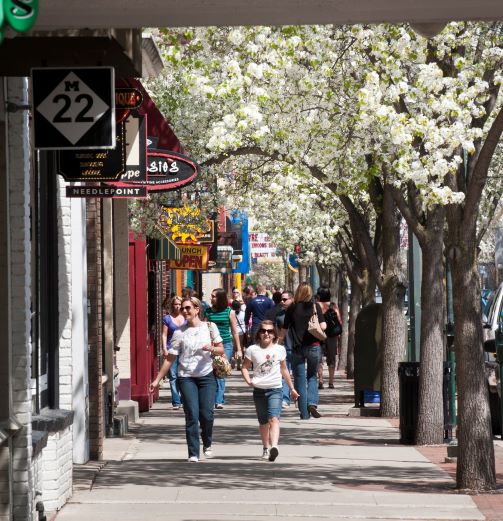For years, we have been arguing that the economic development imperative in Michigan is to create places in our state that can retain and attract young talent. Because today’s young, highly-educated talent are concentrating in dense, walkable, amenity-rich neighborhoods within central cities, this means that to hold onto and attract more young talent, we need to develop many more of these talent-magnet neighborhoods.
Our proposal for how we go about doing that is what we call the Neighborhood Talent Concentration Initiative (NTCI), a proposed state program that would provide resources to Michigan’s central cities to develop talent-magnet neighborhoods/districts. Crucially – and counter to much of what gets labeled as economic development – the resources would be used not for buildings (e.g., stadiums, hotels, offices) but for altering the street-level built environment: shrinking roads and expanding sidewalks to enhance walkability, building new parks and greenspace, supporting and activating commercial corridors, invigorating public art. Young people today are flocking to places with dense, vibrant, activity-rich public spaces – NTCI is an effort to build many more of these spaces in our central cities.
What would this look like in practice? What kinds of projects might be funded through a program like NTCI? How would these projects change the face of our central cities?
In the coming weeks we will share examples from around the country and right here in Michigan of the changes we would hope to see in our central cities if we are to retain and attract talent at scale, and grow Michigan’s economy. In this first post we want to highlight the Capital Line, a recently proposed project in Columbus, OH.
The project, as outlined in a recent article in the Columbus Dispatch, would construct a two mile bike and pedestrian path around a number of downtown assets, including parks, museums, and public squares (click the link above to view some of the renderings). The path would be wide – ranging from 12 to 30 feet – replacing much of what is now roadway and street parking. In short, a lot more room for pedestrians, a lot less for cars. The path would be bordered by new landscaping and expanded restaurant seating. The proposed project has a price tag of $100 million.
This kind of project is important in its own right, in creating a better pedestrian experience for residents and visitors in downtown Columbus. But it is that much more important for what will come next. The consortium working on the project – which includes city government, a downtown development authority, and a real estate development firm – predict the project will generate many more hundreds of millions of dollars in development, as has happened in a number of greenway projects nationally. Indeed, this is precisely our aim for NTCI as well – invest in street-level public space, to catalyze the private investment in residential and commercial development that will inevitably follow, and increase density in our downtown neighborhoods.
It isn’t hard to imagine similar projects taking shape in our central cities, particularly Detroit. The Cultural Center Planning Initiative in midtown Detroit is similar in many ways to the Capital Line project, as it seeks to connect the many arts and cultural institutions in midtown Detroit through enhanced walkability and beautiful public spaces. And the six lane corridors connecting Corktown and Eastern Market to downtown Detroit (Michigan Avenue and Gratiot, respectively) are begging for a road diet that could swap car lanes for pedestrian friendly paths, greenspace, public art, and commercial spaces. The goal of NTCI is to catalyze and expand this kind of work, and give our central cities the resources they need to create dense, walkable neighborhoods and districts.
The Columbus Capital Line project isn’t perfect. Our ideal vision would not solely focus on a pedestrian path, but would also intentionally make investments in parks, the arts, and small businesses. Still, Columbus’s Capital Line project is the kind of project we hope the NTCI will be used for – projects that prioritize people over cars, and aim for walkability, density, and activity-rich spaces.







